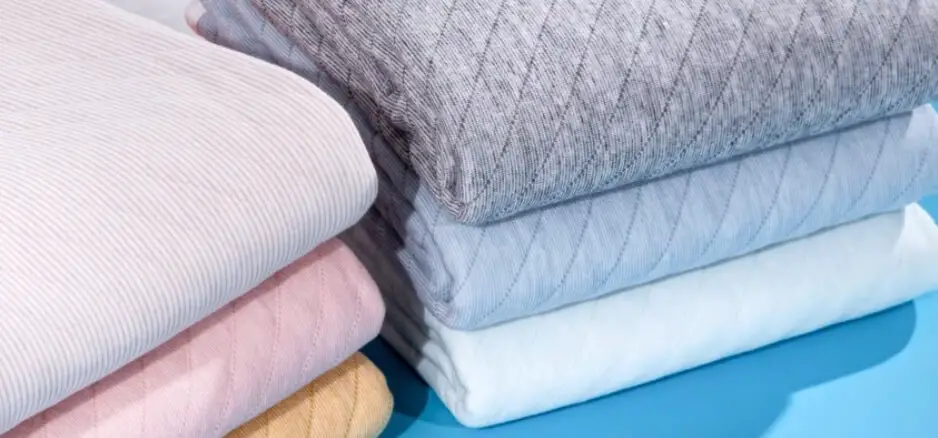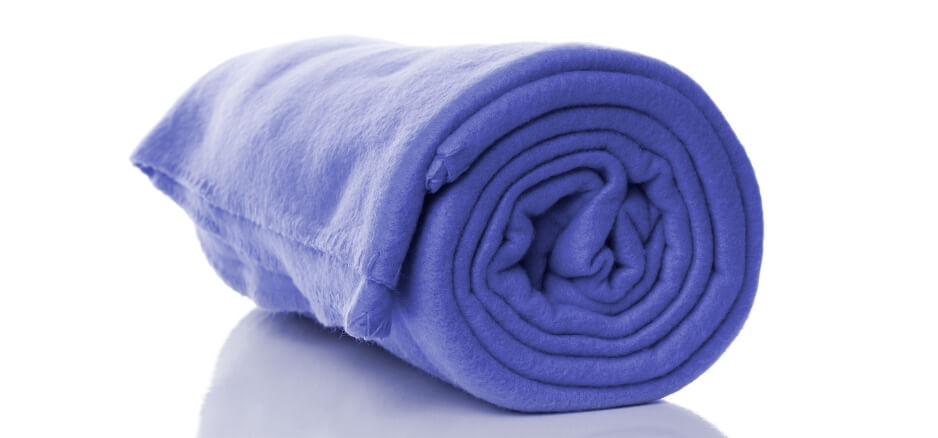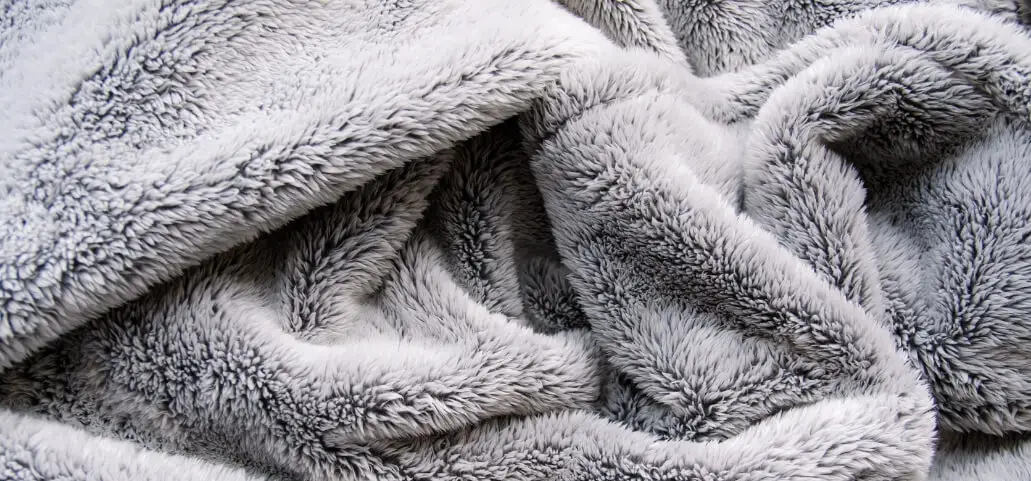
Why does my Blanket Have a Zipper: Top 3 Blankets with Revolutionary Zippers
Welcome to our exploration of a common question that many have pondered: “Why does my blanket have a zipper?” You’re not the only one who has ever been interested in learning the rationale behind this apparently straightforward feature. In this piece, we’ll explore the realm of zipped blankets, learning the rationale behind their creation and the advantages they provide. So, let’s unzip the mystery together and discover the functionality and advantages of blankets equipped with zippers.
Purpose of Zippers on Blankets
Zippers on blankets, once associated primarily with jackets and bags, have found a notable place in the realm of bedding, offering a myriad of benefits that extend beyond mere fastening. In this exploration, we unravel the multifaceted purposes of zippers on blankets, delving into the realms of convenience, customization for temperature control, and the innovative design they bring to the world of bedding.
A. Convenience in Washing and Maintenance:
Zippers on blankets usher in a new era of convenience in the realm of washing and maintenance. Traditionally, washing large blankets could be a cumbersome task, often requiring a trip to the laundromat or the struggle of fitting them into a home washing machine. Zippers revolutionize this process, allowing for easy removal of covers or layers that can be washed separately. This not only simplifies the laundering process but also enhances the overall hygiene of the blanket, as different components can be cleaned with precision.
The practicality of zippers becomes particularly evident in the case of duvet covers or removable layers. Instead of wrestling with an entire blanket, users can effortlessly unzip and remove the cover for washing, preserving the integrity of the blanket itself while ensuring a convenient and efficient cleaning routine.
B. Customization and Adjustability for Temperature:
Zippers inject a layer of customization and adjustability into the realm of blanket usage, offering users the power to tailor their sleep environment according to individual temperature preferences. Blankets with zippers often feature multiple layers or sections that can be easily zipped or unzipped to regulate warmth.
During colder nights, users can zip up additional layers for enhanced insulation, creating a snug cocoon of warmth. Conversely, on milder nights or for individuals who tend to sleep warmer, unzipping specific sections allows for better ventilation and a cooler sleep experience. This adaptability ensures that the blanket is not only a source of comfort but also a versatile tool that caters to the ever-changing thermoregulation needs of individuals.
C. Innovation in Blanket Design:
Zippers on blankets represent a paradigm shift in the world of bedding design, ushering in an era of innovation and versatility. In addition to their practical use, zippers are decorative components that enhance the blanket’s visual attractiveness. The strategic placement of zippers, whether along seams or as accent features, adds a contemporary and stylish touch to blankets.
Additionally, zippers facilitate the creation of modular blankets or those with interchangeable components. This opens up possibilities for users to mix and match different layers, textures, or patterns, creating a truly personalized and ever-evolving bedding experience. The innovative use of zippers transforms blankets from static pieces to dynamic and adaptable elements within home decor.
Types of Blankets with Zippers
As the bedding landscape evolves to meet the diverse needs of consumers, blankets with zippers have emerged as versatile solutions that offer a blend of functionality and design innovation. Let’s explore three prominent types of blankets that incorporate zippers, each catering to different preferences and lifestyle requirements.
A. Duvet Covers:
Duvet covers with zippers represent a transformative approach to both bedding aesthetics and maintenance. These covers encase a duvet or comforter, providing an additional layer of protection while allowing for easy customization and cleaning. The inclusion of zippers along the seams facilitates effortless removal and installation of the cover, streamlining the process of washing and maintaining the blanket within.
The practicality of duvet covers with zippers extends beyond convenience; it introduces an element of style. Zippers provide a chance to experiment with colors, textures, and patterns when they are positioned strategically to become design features. Users can easily swap out duvet covers to refresh the look of their bedding, making these blankets not just functional but also versatile statements in bedroom decor.
B. Weighted Blankets:
Weighted blankets, designed to provide a comforting sense of pressure and promote relaxation, have embraced the zipper trend to enhance both functionality and user experience. Zippers on weighted blankets often serve a dual purpose – facilitating the removal of an outer cover for washing and enabling the adjustment of the blanket’s weight.
The ability to customize the weight of the blanket by adding or removing weighted layers through zippers allows users to fine-tune the sensory experience according to their preferences. This adaptability ensures that weighted blankets with zippers cater to a broader spectrum of users, accommodating varying comfort needs and making them an integral part of personalized sleep routines.
C. Convertible Blankets:
The concept of convertible blankets takes versatility to a whole new level by incorporating zippers as key components in their design. These blankets are cleverly designed to adjust to shifting personal preferences and environmental circumstances. By strategically placing zippers along seams or within the structure of the blanket, users can transform them into different configurations.
Convertible blankets may feature detachable sections that can be zipped on or off, allowing users to adjust the warmth and coverage according to the season. This innovative approach turns a single blanket into a multi-functional piece, suitable for a variety of climates and situations. Whether used as a full-size blanket for chilly nights or transformed into a more breathable configuration for warmer weather, convertible blankets with zippers offer a dynamic and customizable bedding solution.
Benefits of Zippered Blankets
The integration of zippers into the design of blankets has ushered in a wave of benefits that extend far beyond mere practicality. These zippered blankets have become game-changers in the world of bedding, offering a trifecta of advantages that enhance the user experience. Let’s unravel the myriad benefits that zippered blankets bring to the realm of comfort and convenience.
A. Easy Removal for Washing:
One of the standout advantages of blankets with zippers lies in the seamless process of removal for washing. Traditionally, laundering large blankets could be a daunting task, often involving trips to the laundromat or struggling with oversized loads in home washing machines. The inclusion of zippers revolutionizes this process, allowing for the swift removal of covers or layers that can be independently washed.
In the case of duvet covers or outer layers, zippers provide a gateway to effortless cleanliness. Users can simply unzip the cover, detach it from the blanket, and toss it into the washing machine. This not only simplifies the maintenance routine but also ensures a thorough and precise cleaning process, addressing specific components without compromising the integrity of the entire blanket.
B. Simplified Filling Adjustment:
For blankets that incorporate adjustable components, such as weighted blankets, zippers serve as the key to simplified filling adjustment. The purpose of weighted blankets is to create a soothing and cozy atmosphere by dispersing weighted inserts. Zippers along the seams of these blankets facilitate the easy addition or removal of these inserts, allowing users to customize the weight according to their preferences.
The beauty of simplified filling adjustment lies in its adaptability. Users can fine-tune the sensory experience by easily zipping or unzipping sections of the blanket, ensuring optimal comfort and relaxation. This feature transforms the weighted blanket from a static, one-size-fits-all product into a personalized and dynamic solution that caters to the ever-changing needs of individuals.
C. Enhanced Versatility and Functionality:
Perhaps the most overarching benefit of blankets with zippers is the enhanced versatility and functionality they bring to the bedroom. Zippers introduce an element of modularity and adaptability, turning a blanket into a dynamic piece that can evolve to meet different scenarios and preferences.
In the realm of convertible blankets, zippers enable users to transform the blanket’s configuration, adjusting its warmth and coverage to suit the season. This versatility ensures that a single blanket can serve multiple purposes, seamlessly transitioning from a cozy cocoon in winter to a more breathable configuration in the warmer months.
Beyond adaptability, zippers contribute to the overall functionality of blankets, offering users a tool for customization. Whether it’s selecting different layers for warmth, adjusting the weight of a blanket, or simply changing the look with removable covers, the inclusion of zippers empowers users to curate their sleep environment with precision.
Popular Brands and Models
Embarking on the journey of selecting a blanket with zippers opens a vast landscape of options from various brands, each offering unique features and design nuances. Here, we delve into some of the popular brands known for incorporating zippers into their blanket designs, exploring the key features, variations, and the pulse of customer satisfaction reflected in reviews.
A. Highlighting Specific Brands Incorporating Zippers:
- Brooklinen: Renowned for its commitment to quality and design, Brooklinen introduces zippers into its bedding repertoire. The brand’s blankets, particularly duvet covers, showcase the integration of zippers for easy removal and washing. Brooklinen’s approach emphasizes both functionality and aesthetic appeal, making their blankets a favorite among those seeking a blend of practicality and style.
- Gravity Blankets: Gravity Blankets has carved a niche in the market for its innovative approach to weighted blankets. The ability to customize these blankets using zippers is essential because it lets users change the weight to suit their needs. The brand’s commitment to creating a calming sleep experience, coupled with the flexibility offered by zippers, has garnered attention and positive feedback from consumers.
- Nest Bedding: Nest Bedding embraces the concept of versatility with its zippered blankets. From duvet covers to convertible blankets, Nest Bedding caters to those seeking adaptability in their bedding choices. The brand’s commitment to using quality materials and incorporating user-friendly features, including zippers, reflects in the positive reception of its products.
B. Features and Variations in Their Products:
- Duvet Covers with Zippers: Brands like Brooklinen excel in offering duvet covers with strategically placed zippers. These covers not only simplify the washing process but also present an opportunity for users to change the look of their bedding with ease. The inclusion of zippers in duvet covers aligns with a modern approach to maintenance and design customization.
- Weighted Blankets with Adjustable Zippers: Gravity Blankets takes the concept of weighted blankets to the next level by incorporating zippers for weight adjustment. Users can customize the sensory experience by adding or removing weighted layers through carefully designed zipper compartments. This level of adaptability ensures that the blanket caters to a broad spectrum of comfort preferences.
- Convertible Blankets for Seasonal Use: Brands like Nest Bedding introduce convertible blankets that seamlessly adapt to seasonal changes. Zippers play a crucial role in transforming the blanket’s configuration, allowing users to adjust warmth and coverage. This innovative approach ensures that a single blanket remains relevant and functional throughout the year.
C. Customer Reviews and Satisfaction:
Examining consumer evaluations offers insightful information about how satisfied customers are with the zipped blankets these manufacturers have to offer. Positive feedback often highlights the convenience of washing, the ease of customization, and the overall satisfaction with the quality of materials.
- Brooklinen: Customers appreciate Brooklinen’s commitment to quality and design. The incorporation of zippers in their duvet covers receives acclaim for simplifying the maintenance routine, with users expressing satisfaction in the longevity and style of their blankets.
- Gravity Blankets: Gravity Blankets stands out for its innovative approach to weighted blankets. Users commend the effectiveness of zippers in adjusting the weight, offering a personalized sleep experience. Positive evaluations frequently emphasize the brand’s focus on user comfort and attention to detail.
- Nest Bedding: Nest Bedding’s zippered blankets receive praise for their versatility and adaptability. Consumers like the brand’s dedication to employing high-quality fabrics, and zippers add to the blankets’ overall utility. Positive reviews often emphasize the brand’s dedication to customer satisfaction.
Tips for Maintaining Zipper Integrity:
- Follow Care Instructions: Maintaining the integrity of the zipper requires careful attention to the care recommendations supplied by the manufacturer. There could be particular cleaning and upkeep needs for certain materials and designs. You can make sure the zipper keeps working at its best over time by according to these rules.
- Use a Gentle Cycle: Use a moderate cycle in your washing machine for cleaning blankets with zippers. This reduces the stress on the zipper and the overall fabric, contributing to the longevity of both. Additionally, using cold water can prevent any potential damage to the zipper material.
- Avoid Overloading the Washing Machine: The zipper and the cloth may experience undue strain if the washing machine is overloaded. To prevent strain on the zipper, ensure that the blanket has enough space to move freely within the washing machine. Maintaining zipper functionality can be greatly enhanced by taking this little precaution.
Solutions for Potential Issues:
- Zipper Stuck or Jammed: When dealing with a jammed or blocked zipper, try not to force it. Retrace your steps gently and adjust the zipper teeth. To further smooth the action, run a tiny bit of lubricant or wax down the zipper track.
- Zipper Teeth Misaligned: Misaligned zipper teeth can hinder smooth operation. Carefully examine the zipper and guide the teeth back into alignment. Tugging gently on either side of the fabric while zipping can aid in the process.
- Zipper Fabric Caught: In the event of fabric getting caught in the zipper, refrain from pulling forcefully. Instead, carefully release the fabric by moving the zipper pull in the opposite direction. A gentle touch is key to preventing any damage to the zipper or the blanket material.
Price Range and Affordability Zippered Blankets
Variations exist in the pricing range of zippered blankets based on elements including brand reputation, material quality, and extra features. Entry-level zippered blankets, made from basic materials and offering standard features, are generally more budget-friendly, with prices starting from as low as $20 to $30 for smaller sizes.
Mid-range zippered blankets, featuring higher-quality materials, enhanced design elements, and additional functionalities such as adjustable weights or reversible designs, typically range from $50 to $100, depending on size and brand.
Premium zippered blankets, crafted from premium materials, boasting intricate designs, and offering advanced features like temperature regulation or antimicrobial properties, are available at higher price points, ranging from $100 to $300 or more for larger sizes.
While premium options may represent a higher initial investment, they often come with added durability, comfort, and innovative features that justify the higher price tag for discerning consumers seeking long-term value and performance.
DIY Zippered Blanket Projects
For those with a flair for creativity and a desire to infuse a personal touch into their bedding, DIY zippered blanket projects offer a world of possibilities. Discover innovative ways to add zippers to existing blankets, explore personalization and customization options, and access a wealth of DIY tutorials and resources to embark on your own custom blanket journey.
A. Creative Ways to Add Zippers to Existing Blankets:
- Zippered Duvet Covers: Transform a regular blanket into a versatile duvet cover by sewing zippers along the edges. This not only facilitates easy removal for washing but also opens the door to changing the look of your bedding with different duvet covers.
- Convertible Blanket with Zippered Sections: Add zippers to specific sections of a blanket to create a convertible design. This allows you to adjust the warmth and coverage by zipping or unzipping different portions, providing a customized experience for every season.
- Weighted Blanket with Adjustable Pockets: Craft a DIY weighted blanket with adjustable pockets using zippers. Sew small pockets into the blanket and insert weights. By adding or removing weights through zippers, you can tailor the blanket’s sensory experience to your liking.
B. Personalization and Customization Options:
- Fabric Selection: Select textiles that are in line with your tastes and style. Whether it’s a soft fleece, breathable cotton, or a textured material, the fabric sets the tone for the overall aesthetic of your DIY zippered blanket.
- Color and Pattern Coordination: Exercise creative freedom by coordinating colors and patterns. Mix and match fabrics to create unique designs or opt for a cohesive color palette that compliments your bedroom decor.
- Embroidery and Appliqué: Elevate personalization by incorporating embroidery or appliqué. Add initials, meaningful symbols, or decorative elements to make the blanket truly one-of-a-kind.
C. DIY Tutorials and Resources:
- Online Sewing Communities: Join online forums for sewing where people who enjoy do-it-yourself projects discuss zipped blankets and provide advice and suggestions. A wealth of ideas and advice may be found on websites like Pinterest and sewing forums.
- Video Tutorials: Look for step-by-step instructions by watching tutorial videos on websites such as YouTube. Experienced crafters often share their techniques, providing visual instructions that cater to various skill levels.
- Crafting Blogs and Websites: Delve into crafting blogs and websites dedicated to DIY projects. Many of these platforms offer detailed tutorials, downloadable patterns, and insightful tips to guide you through the process of adding zippers to blankets.
Conclusion
In conclusion, the presence of a zipper on your blanket serves various functional and aesthetic purposes. From facilitating easy maintenance to offering customization options, zippered blankets cater to the evolving preferences of modern consumers. Whether it’s for washing convenience, adjusting warmth, or adding a personal touch through DIY projects, the zipper has become a versatile element enhancing the overall experience of blanket ownership. Embrace the practicality and style that zippered blankets bring, providing a seamless blend of functionality and design in your bedding choices.
Frequently Asked Questions
Q1. Why does my blanket have a zipper?
Answer: Blankets with zippers offer practical benefits, such as easy washing and customization options. The zipper allows for convenient maintenance and the possibility of transforming your blanket’s look.
Q2. How do I wash a zippered blanket?
Answer: Washing a zippered blanket is simple. Just adhere to the manufacturer’s care recommendations. Usually, it’s easy to remove the cover, which makes washing faster and easier.
Q3. Can I personalize a zippered blanket?
Answer: Absolutely! The presence of a zipper opens the door to DIY projects. You can add a personal touch by choosing fabrics, colors, and even incorporating embroidery or appliqué to make your blanket uniquely yours.







